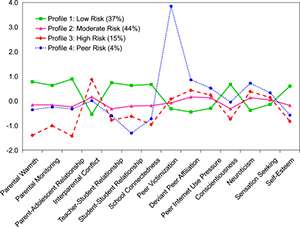Multiple risk factors can predict internet addiction in adolescents

As technology continues to rapidly evolve, the development of internet addiction among adolescents has become as serious public health concern – especially in Asian countries such as China.
But, can researchers actually predict the children who are at risk?
Stella Xian Li, who earned her Ph.D. from UAlbany's Department of Educational and Counseling Psychology this semester, is part of a collaborative study which links individual and environmental risk factors with internet addiction in adolescents.
Findings were released this month in Computers in Human Behavior.
The study, led by Li Dongping of Central China Normal University, surveyed 998 Chinese adolescents. Participants were asked questions based on 14 different family, school, peer and individual risk factors. For example, "are you satisfied with your relationship with your parents?" and "how many times have you been teased or picked on by others during the past 12 months?"
Participants were grouped into four profiles based on their answers: low risk, moderate risk, high risk and peer risk. Results showed that the higher the risk profile, the greater the probability of internet addiction.
"Few studies have comprehensively investigated the impact of multiple risk factors across domains on adolescent internet addiction," Li said. "We have provided a novel way to understand how individual and environmental risk factors come together as influencers."

59 percent of the participants fit into the moderate or high risk profile. Although only four percent of participants fit into the peer risk profile (the highest risk group), those participants were the most likely to experience internet addiction.
Current internet addiction prevention programs tend to focus on only singular risk factors. The team's findings suggest that targeting a broad array of environmental and individual risk factors may be a better approach.
Li would also like to see researchers investigate how neural, biological and psychological processes are associated with internet addiction in adolescents.
"These findings highlight the importance of multiple risk factor exposure profiles when evaluating adolescent internet addiction," Li said. "We are encouraging those involved in treatment to consider a multi-pronged approach instead of just targeting singular factors."
More information: Dongping Li et al. Linking multiple risk exposure profiles with adolescent Internet addiction: Insights from the person-centered approach, Computers in Human Behavior (2017). DOI: 10.1016/j.chb.2017.04.063















